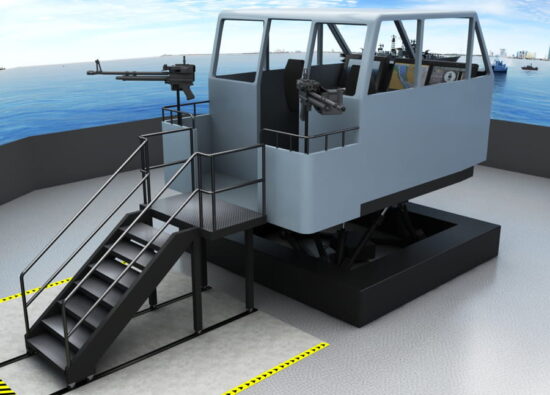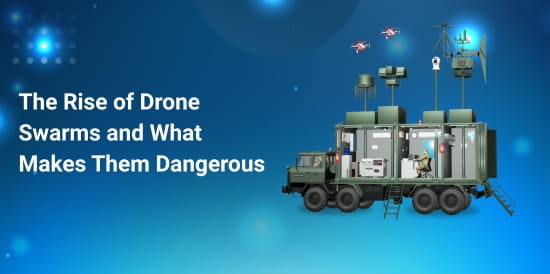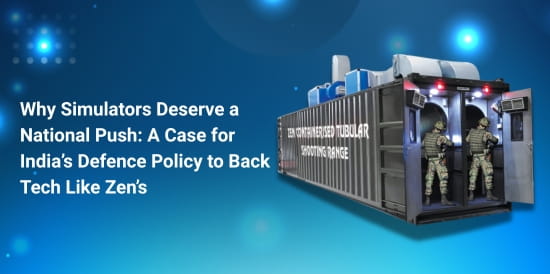AI-Enabled FAC Simulator Transforming How the Indian Navy Trains for Combat
India’s maritime environment is among the most complex and strategically volatile in the Indo-Pacific. From safeguarding expansive exclusive economic zones to countering asymmetric coastal threats, the operational demand on naval units—particularly Fast Attack Craft (FAC) teams—is intensifying. In such a context, the ability to train, rehearse, and simulate mission scenarios with absolute precision becomes not just a tactical asset but a national necessity.
This is where Zen Technologies’ new FAC Simulator marks a defining moment—not merely as a training tool but as a leap forward in India’s defence autonomy. Built in partnership with ARI Simulation, the FAC Simulator stands as India’s first AI-enabled, motion-integrated simulation system designed specifically for FAC missions. Its development represents a new layer of capability for Indian naval forces and an important step forward in the Atmanirbhar Bharat journey.

Fast Attack Craft Simulator (FACS)
Where Global Simulators Stop Short—and Why That Matters
Modern navies around the world have long used high-fidelity simulators to improve combat readiness. But these systems—developed largely in the West—are expensive, heavily customized, and rarely optimized for Indian strategic realities. While global solutions offer high-end graphics or navigation modeling, they often fail to deliver localized environmental realism, affordable lifecycle support, or interoperability with India’s unique naval doctrines.
Moreover, these simulators tend to be black-box systems—closed, difficult to adapt, and heavily reliant on foreign contractors for maintenance or upgrades. This not only drives long-term cost but undermines sovereign control. We at Zen Technologies, identified this gap and moved to build a homegrown alternative—one that is technologically advanced, tactically relevant, and operationally indigenous.
The FAC Simulator is designed specifically for Indian waters, Indian threats, and Indian operators.
Engineering Indigenous Precision: Inside the Simulator
At the heart of Zen’s FAC Simulator is a motion-integrated training environment built on a six-degree-of-freedom (6-DOF) motion platform. This enables precise replication of vessel dynamics, accounting for pitch, roll, yaw, heave, sway, and surge—parameters critical for simulating combat maneuvers at sea. Trainees don’t just see motion, they feel it.
The system includes full-spectrum 360-degree visual environments, EO/IR targeting modules, and integrated weapons simulation. Operators can train on medium machine guns and remote weapon stations complete with recoil modeling and ballistic behavior. These are not cosmetic overlays—they reflect sensor lag, vibration, and target acquisition conditions that closely mimic real-world conditions.
The simulator moves the benchmark forward with its use of AI-enabled instructor stations. Unlike traditional simulators that depend entirely on static scripts, Zen’s system incorporates an adaptive learning engine that assesses crew response, adjusts threat scenarios in real time, and benchmarks performance across variables. This transforms training from repetition to evolution.
Building for Indian Operational Realities
While global vendors simulate Baltic calm, Zen has built for the chaos of the Indian coastline. From dust-laden air in Porbandar to high-humidity environments in Visakhapatnam, Indian naval training zones are harsh on hardware. The FAC Simulator accounts for this by integrating systems resilient to fluctuating temperature, particulate interference, and infrastructural variability.
What’s more, the simulator is built with modularity at its core. It is designed to plug into existing training infrastructures, evolve with new hardware, and adapt to new combat doctrines. This flexibility ensures long-term viability without vendor lock-in.
The philosophy here is clear: the simulator is not a showcase. It is a system intended to be used, stressed, challenged, and continuously adapted in real-world naval training.
Atmanirbhar Bharat and the Shift from User to Creator
The development of the FAC Simulator directly addresses one of the most pressing challenges in India’s defence modernization push: dependence on imported simulation technologies. For decades, India has trained its warfighters on systems calibrated for foreign equipment, foreign combat assumptions, and foreign service support.
Zen’s approach counters that trend. By building advanced simulation tools domestically, India is moving from defence user to defence author. The FAC Simulator is not just a product; it is a capability. One that can be upgraded, exported, and scaled without strategic compromise.
It aligns squarely with the goals of Atmanirbhar Bharat, which is not about insulation but about sovereignty. Sovereignty over design, manufacturing, doctrine integration, and data. That control is now embedded in a system that prepares naval personnel for high-stakes missions with unmatched precision.
As highlighted in India’s Defence Production and Export Promotion Policy (DPEPP) 2020, simulation is identified as a critical enabler for export-ready military capability. The FAC Simulator is one of the first indigenous systems ready to be showcased not just within Indian fleets but to allied nations seeking affordable, high-fidelity naval training.
What Comes Next: Deployment, Trust, and Strategic Impact
Zen’s simulator now faces the ultimate test: full-scale deployment within Indian Navy training protocols. For the system to reach its full potential, it must be trusted not just by program officers, but by commanding officers, doctrine developers, and crew trainers.
Performance metrics must be proven over time—across dozens of missions, hundreds of operators, and thousands of data points. The simulator must evolve with changing threat profiles: drone-boat coordination, electromagnetic interference, high-speed swarm attacks. And beyond that lies export readiness. If India can field its own FAC simulators across naval academies, coast guard training facilities, and allied bases abroad, it opens a new chapter for Indian defence exports—not just in platforms, but in intellectual and training infrastructure.
From Dependence to Mastery
Unlike the earlier Make in India approach that relied heavily on foreign technology transfers, Atmanirbhar Bharat is a fundamental reset. It shifts the focus to indigenous innovation, intellectual property ownership, and the development of technologies that are indispensable to national security.
Zen’s FAC Simulator is a direct outcome of this shift. It is not adapted. It is not outsourced. It is built entirely for Indian forces, by Indian engineers, to solve Indian challenges. This is how real self-reliance is built. Not by assembling parts, but by owning the process end to end.
With the Zen FAC simulator, India no longer trains its naval crews on borrowed systems. It trains them on its own. And that is the real measure of Atmanirbhar Bharat—when the mission, the method, and the machine are all ours. When we build at this level, we’re not just meeting our own needs. We’re creating the systems others will one day turn to. With capabilities like these, India isn’t catching up. It’s setting the pace.





Leave feedback about this